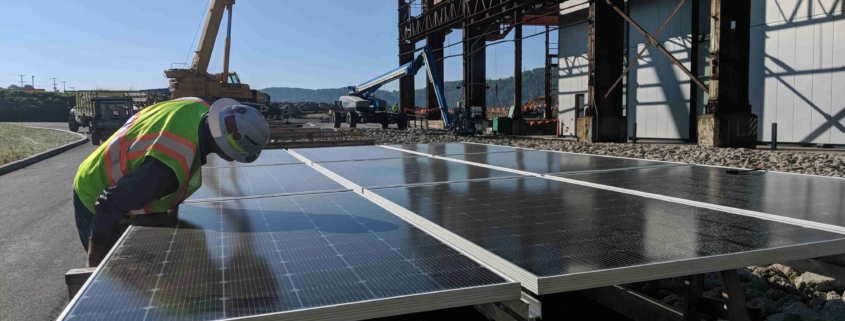In recent years, the construction industry has been undergoing a remarkable transformation towards sustainable construction practices. As environmental concerns and the need for resource conservation intensify, architects, engineers, and construction professionals are embracing innovative techniques and technologies that prioritize sustainability. This shift not only benefits the planet but also presents numerous advantages for businesses and communities alike. In this blog, we will explore the exciting future of construction and the vital role that sustainable building designs and practices play in shaping it.
Sustainability: A Necessity, Not a Choice
The urgency to adopt sustainable construction practices stems from the realization that traditional methods have had significant environmental impacts. Rapid urbanization, deforestation, and the excessive consumption of non-renewable resources have contributed to carbon emissions, habitat destruction, and climate change. Recognizing this, the construction industry is actively embracing sustainability as a necessity rather than a choice. Sustainable principles aim to minimize the environmental footprint of buildings while maximizing their efficiency and longevity.
Energy Efficiency and Green Building Standards
One of the key aspects of sustainable construction practices is energy efficiency. Buildings account for a substantial portion of global energy consumption and greenhouse gas emissions. To mitigate this impact, green building standards such as LEED (Leadership in Energy and Environmental Design) and BREEAM (Building Research Establishment Environmental Assessment Method) have emerged. These guidelines promote the use of energy-efficient materials, renewable energy sources, efficient insulation, and water-saving systems. Additionally, concepts like passive design, which leverages natural light and ventilation, are gaining popularity, reducing dependency on artificial lighting and HVAC systems.
Sustainable Materials and Techniques
The future of construction lies in the utilization of sustainable materials and innovative construction techniques. Traditional materials like concrete and steel are being reevaluated due to their high carbon footprint. Alternatives such as engineered wood, bamboo, and recycled materials are gaining traction for their lower environmental impact and renewability. Furthermore, off-site construction methods, including prefabrication and modular construction, are being embraced for their efficiency, reduced waste generation, and enhanced quality control.
Smart Buildings and Technologies
The integration of smart technologies in construction is revolutionizing sustainable building practices and the industry. Smart buildings utilize sensors, automation, and data analytics to optimize energy consumption, monitor building performance, and enhance occupant comfort. From energy-efficient lighting systems that adjust based on occupancy to smart thermostats that learn occupant preferences, these technologies enable buildings to operate at peak efficiency while minimizing environmental impact. Additionally, the Internet of Things (IoT) enables real-time monitoring and maintenance, preventing wastage and optimizing resource utilization.
Circular Economy and Waste Reduction
Another significant aspect of sustainable construction is the adoption of circular economy principles. This approach aims to minimize waste generation, maximize resource utilization, and promote recycling and upcycling. Construction waste, which traditionally ends up in landfills, is now being repurposed or recycled. Innovative practices such as deconstruction and material reclamation ensure that valuable resources are not wasted. Furthermore, designing for the disassembly of renewable or reusable materials facilitates the eventual recycling or repurposing of buildings themselves.
The future of construction lies in embracing sustainable building practices. With a growing awareness of environmental concerns and the need for resource conservation, the industry is transforming to minimize its impact on the planet. Energy-efficient buildings, the use of sustainable materials, smart technologies, and circular economy principles are reshaping the way we construct and inhabit buildings. By prioritizing sustainability, the construction industry can create structures that are not only environmentally friendly but also economically viable and socially responsible. Together, we can build a future where sustainable construction practices are the norm, creating a more resource-dense planet for generations to come.



